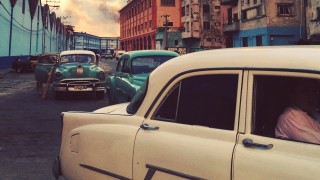The readings and lessons stayed with me beyond the classrooms, as I saw my readings and lessons in action and alive.
My first weeks in Havana, my brain was overstuffed. Walking the streets, taking the bus, reading the consignas of "socialismo o muerte" (socialism or death). The readings and lessons stayed with me beyond the classrooms, as I saw my readings and lessons in action and alive. There were contradictions and confirmations, surprises and mysteries. As nearly every professor told me, "lo más que aprendes sobre Cuba, lo menos que entiendes" - the more you learn about Cuba, the less you understand.
Before this I had never studied the place in which I was living. The core, my English courses, and classes at Casa Hispánica have never been focused on the history of Morningside Heights, or even New York City generally. For the first time I was seeing the source of all my academic work, the living history and culture that made up my education, in front of me. At first this was overwhelming. Walking around, I was an over-saturated sponge. I lived in an apartment building that was part of the epicenter of US mob influence in 1950's Havana, I was taking classes where Fidel, and other students, began their political movements, and I was witnessing the results of the Revolution everywhere.
With time, I adjusted. Not only did I adjust, but the orientation of my education shifted. My time and effort was not serving my classes; instead my classes were serving my experience and journey through Cuba. Talking to strangers, taking photos, and adapting to practical and cultural aspects of Havana life became my main goal, with the support of my classes which soon became supplementary. This allowed me not only to gain so much more from my classes, but from the entire experience. This shift, towards my classes serving me and not the other way around, has stayed with me since I've returned to Morningside Heights.

